Historically, the Snake River basin was the largest salmon producer in the Columbia River system, once home to salmon runs numbering in the millions. Today, all stocks of salmon and steelhead in the basin are gravely imperiled and some are at the precipice of extinction. Over the last 20 years, the federal government has invested nearly $17 billion into the recovery of Snake River Basin salmon and steelhead—with little to nothing to show in the way of results. The reason, scientists say, is the continued existence of the lower Snake River dams, which destroy habitat, create conditions averse to fish survival, and block passage to vital spawning habitat. This week, ten scientists signed an open letter to the governors of Washington, Oregon, Montana and Idaho calling on those states to remove the lower four dams on the Snake River, stating that "abundant, healthy and harvestable wild Snake River salmon and steelhead cannot be restored and sustained with the four lower Snake River dams in place."
Amongst the letter's signatories is Jack Williams, emeritus senior scientist at Trout Unlimited; David Montgomery of the University of Washington, author of The King of Fish: The Thousand-Year Run of Salmon; James Lichatowich, noted salmon fisheries biologist and author of Salmon Without Rivers; Don Chapman, retired state and federal agency biologist; Richard Williams of the College of Idaho; Bruce Rieman and Peter Bisson, retired U.S. Forest Service scientists; Charles Petrosky, retired Idaho Department of Fish and Game biologist; and Howard Schaller, retired project leader for the Columbia River Fish and Wildlife Conservation Office at the U.S. Fish & Wildlife Service.
The good news, according to the scientists who drafted the letter, is that the Snake River basin "remains exceptional in its recovery potential." But, the letter warns, fisheries managers find themselves at a pivotal moment, with "every Snake River salmon and steelhead population is listed under the Endangered Species Act (ESA), with recent returns consistently below the threshold needed to avoid extinction." If the dams are not removed, the scientists write, "the basin’s salmon and steelhead are highly likely to become extinct."
"It is our collective opinion, based on overwhelming scientific evidence, that restoration of a free-flowing lower Snake River is essential to recovering wild Pacific salmon and steelhead in the basin. We base our opinion on our deep expertise in the science of salmon and steelhead conservation including decades of collaborative research that has withstood rigorous scientific review. Continued hatchery reform, habitat restoration and other actions are needed, but dam breaching is the essential cornerstone of a comprehensive, effective recovery strategy," the letter states.
The lower Snake River dams are all run-of-river dams, which means they don't store water, and thus don't provide any flood control. Lower Granite Dam is actually regarded to increase flood risk to Lewiston, Idaho. Due to the lack of water storage, the dams also don't offer much in the way of irrigation. In fact, Ice Harbor Dam is the only dam in the lower system that provides any irrigation whatsoever—and in a limited volume that is said to be easily replaced by running intake pipes into a free-flowing Snake. What the dams do offer nearby communities, however, is electricity—only not that much. At peak capacity—a level at which the dams very rarely operate—they can generate 3,000 megawatts of power. But their actual yearly output is just over 1,000 average megawatts—an amount that is easily and relatively cheaply replaced by clean energy sources like wind.
Lacking ammunition to justify the dam's continued existence, defenders of the lower Snake River dams have more recently begun citing poor ocean conditions of the last several years as evidence that the problems facing Snake River salmon and steelhead lie outside the basin. In their letter, the scientists dismiss this charge, calling the logic "flawed" and stating that "it ignores the tremendous body of scientific analysis that clearly demonstrates the importance of the freshwater phase of the salmon and steelhead life-cycle — from eggs in gravel, to migration to the ocean as smolts, and to migration from river entry to spawning grounds as adults." The letter goes on to note that "ocean conditions fluctuate. Recent conditions in the north Pacific have been tough on the fish. But a key to ensuring that salmon and steelhead can persist through poor ocean cycles and thrive during good ocean cycles is access to high quality freshwater habitat that produces abundant, healthy, diverse salmon and steelhead."
Taking care not to dismiss the significance of removal, the scientists close the by stating, "We recognize that removal of the lower four Snake River dams will involve major change in the region, necessitating investment in industries and local communities to adapt to a free-flowing lower Snake River. We believe that there are affordable, cost-effective alternatives that can provide the economic benefits currently provided by the dams. We strongly support taking such measures. The weight of scientific evidence demonstrates there is no chance of restoring abundant, healthy and harvestable Snake River salmon and steelhead with the lower Snake River dams in place."

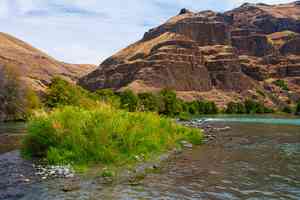

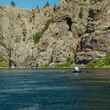

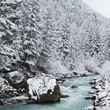
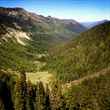

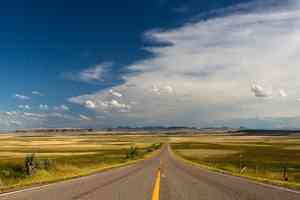


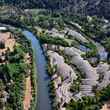

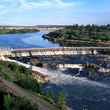
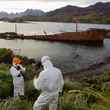
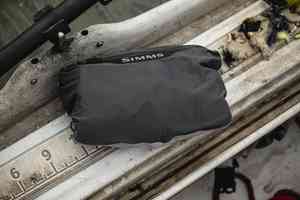
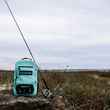


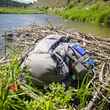




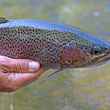



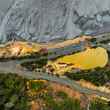
Comments
Michael A Norris replied on Permalink
I'm all for improvement for the fish runs here in the north west. Other than the few years I was away in the Marine Corp, I've fished for salmon and steelies my whole life and have watched the runs diminish greatly. Several years ago they removed the only dam on my home Waters of the Sandy river making it one of the only lower Columbia rivers to flow freely from it's glacier to the ocean. Everyone said it would improve our returns... The sediment and sand settled in the lower river. The army corps of engineers said that it would have blown through the river and out into the Columbia in a matter of a couple years. Fortunately that was not the case. Now the fish that do return do not hang in the lower River where the bottom used to be rocks and pebbles and boulders. They made quick runs up the river into the hatchery or beyond. Are returns have not gotten significantly better, in fact they are a little worse than what they were back in the 80s and even the 90s. I have to believe that both sides of that argument are correct. The ocean conditions have been poor and the dams are proven issue 4r salmon and steelhead. Between those two issues and the fact that we don't patrol or offshore Waters enough letting other countries come in and devastate our runs with there fishing practices that wipe out a whole run in one fell swoop with their long lines and such. Seems to leave little hope that we can return our fish runs to the days they used to be.
Pages